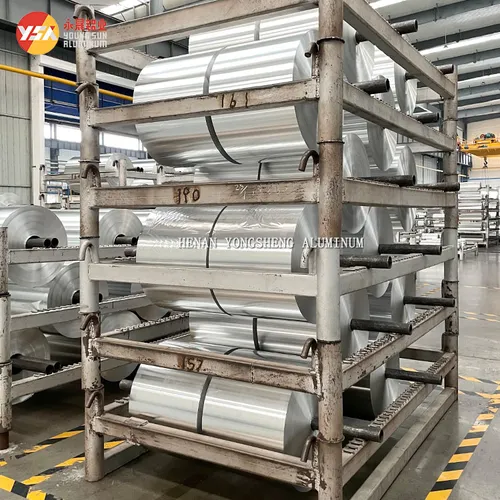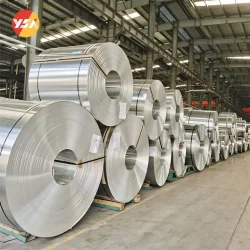Alufoil is a thin strip of aluminum and aluminum alloy with a thickness of ≤0.2mm. Its stamping effect is similar to that of pure silver foil stamping, so it is also known as fake silver foil. Due to the soft texture and good ductility of aluminum, it has a silver-white luster. The sheet after calendering can also be printed or pressed to become colored or embossed aluminum foil. Aluminum foil is generally classified according to its thickness, condition and use.

Classification of Alufoil
According to thickness aluminum foil
Any alufoil larger than 0.012mm is called single foil, and the one smaller than or equal to 0.012mm is called double foil; there is also the thickness with a zero after the decimal point is called single-zero foil, and the one with two zeros after the decimal point is called double foil.
According to the state
It can be divided into full hard foil, soft state foil, semi-hard foil, 3/4 hard foil, 1/4 hard foil. Full hard foil refers to the unannealed foil after rolling (fully annealed strip coil and cold rolled by >75%); soft state foil refers to the fully annealed foil after cold rolling; where the tensile strength of the aluminum foil is between the full hard foil and the soft state foil is called semi-hard foil; where its tensile strength is between the full hard foil and the semi-hard foil is 3/4 hard foil; and where the tensile strength of the aluminum foil is between the soft state foil and the semi-hard foil is called 1/4 hard foil.
According to the surface
It can be divided into single-sided glossy foil and double-sided glossy foil. Aluminum foil rolling is divided into single sheet rolling and double rolling, single sheet rolling, both sides of the foil are in contact with the roll surface, both sides have a bright metallic luster, known as double-sided light foil.
In double rolling, each foil has only one side in contact with the rollers, the side in contact with the rollers is bright, and the two sides in contact with each other are dark, which is called single-sided light foil. The minimum thickness of double-sided light aluminum foil mainly depends on the size of the diameter of the working roll, usually not less than 0.01mm, the thickness of single-sided light foil is usually not more than 0.03mm, the current minimum thickness of up to 0.004mm.

According to the use
Alufoil can be divided into packaging aluminum foil, air-conditioning aluminum foil, electronic aluminum foil and battery aluminum foil, etc. according to the use.
Aluminum foil for packaging
Alufoil has superb performance in terms of impermeability (especially for oxygen and water vapor) and light-shielding, and also has the characteristics of conformability and rigidity, which can prevent air from entering into the food packaging bag by using aluminum foil to package food.
Aluminum foil for AC & aluminum foil as an insulator
Aluminum is widely used due to its advantages of low density, good thermal conductivity, easy processing, odorless, environmentally friendly and inexpensive, etc. The use of aluminum foil to make air conditioning heat exchanger heat-conducting fins is one of the representatives.
Electronic alufoil
It means light foil, which is the key raw material for the production of aluminum electrolytic capacitors. It is divided into electronic aluminum foil and electrode foil due to the order of the production process, of which the electrode foil includes corrosion foil and chemical foil.
Capacitor foil is a kind of corrosion material working under polar conditions, which has high requirements on the organization of the foil, and there are three kinds of aluminum foils used: cathode foil with thickness of 0.015-0.06mm, high-pressure anode foil with thickness of 0.065-0.1mm, and low-voltage anode foil with thickness of 0.06-0.1mm. The anode foil is made of industrial high-purity aluminum, the mass fraction of which should be greater than or equal to 99.93%, while the purity of the aluminum used for high-pressure anode should be greater than or equal to 4N.
Battery aluminum foil
Used as a collector for lithium-ion batteries. Typically, the lithium-ion battery industry uses rolled aluminum foil as the positive collector. The thickness of rolled foil varies from 10 to 50 microns. Commonly used pure aluminum foils for lithium batteries are 1060, 1050, 1145, 1235 and various other alloy grades in -O, H14, -H24, -H22, -H18 and other states.


